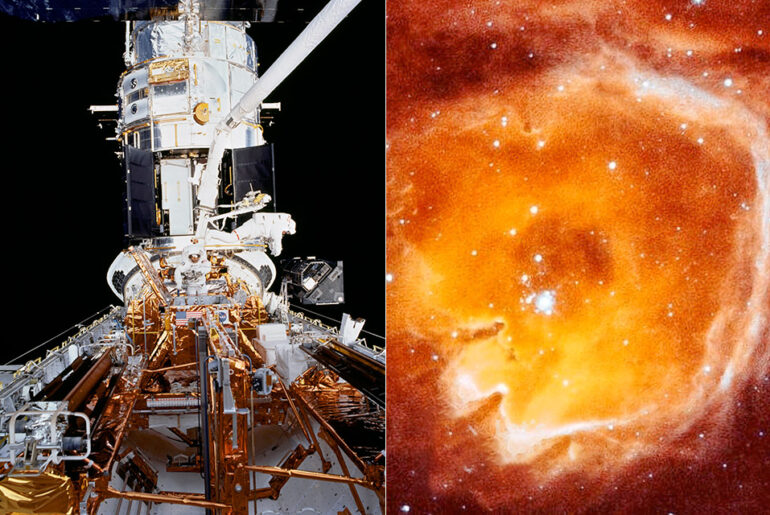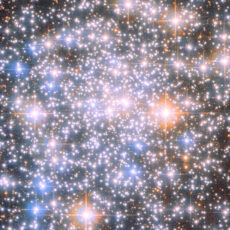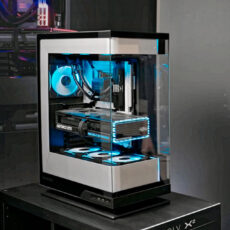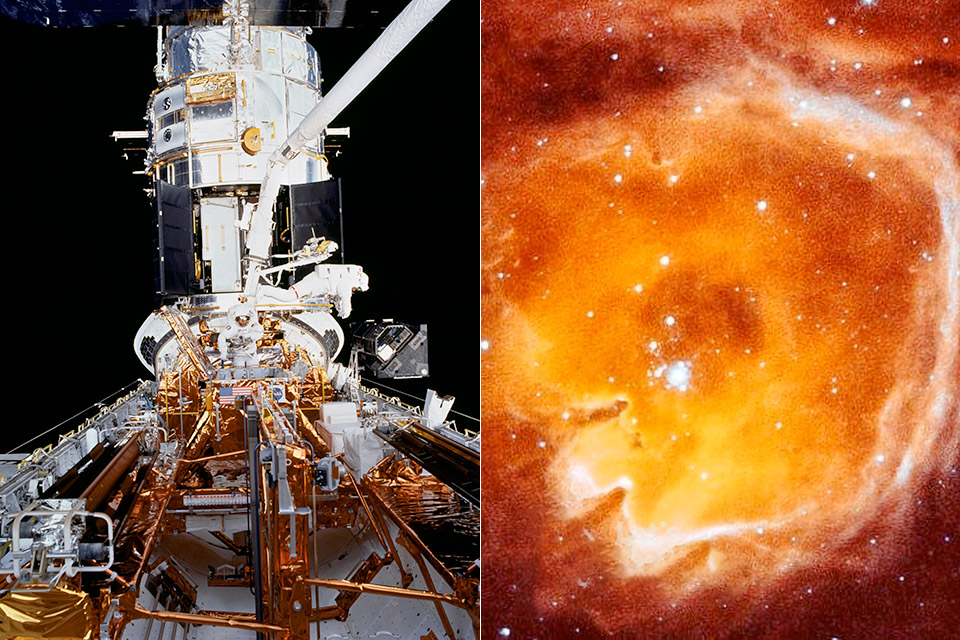
NASA / ESA’s Hubble Space Telescope captures a young star’s intense ultraviolet radiation and stellar wind carving out a gas cavity in N44F. This fiery nebula is located 160,000 light-years from Earth, and compared with our Sun, the central star here is ejecting more than a 100 million times more mass per second.
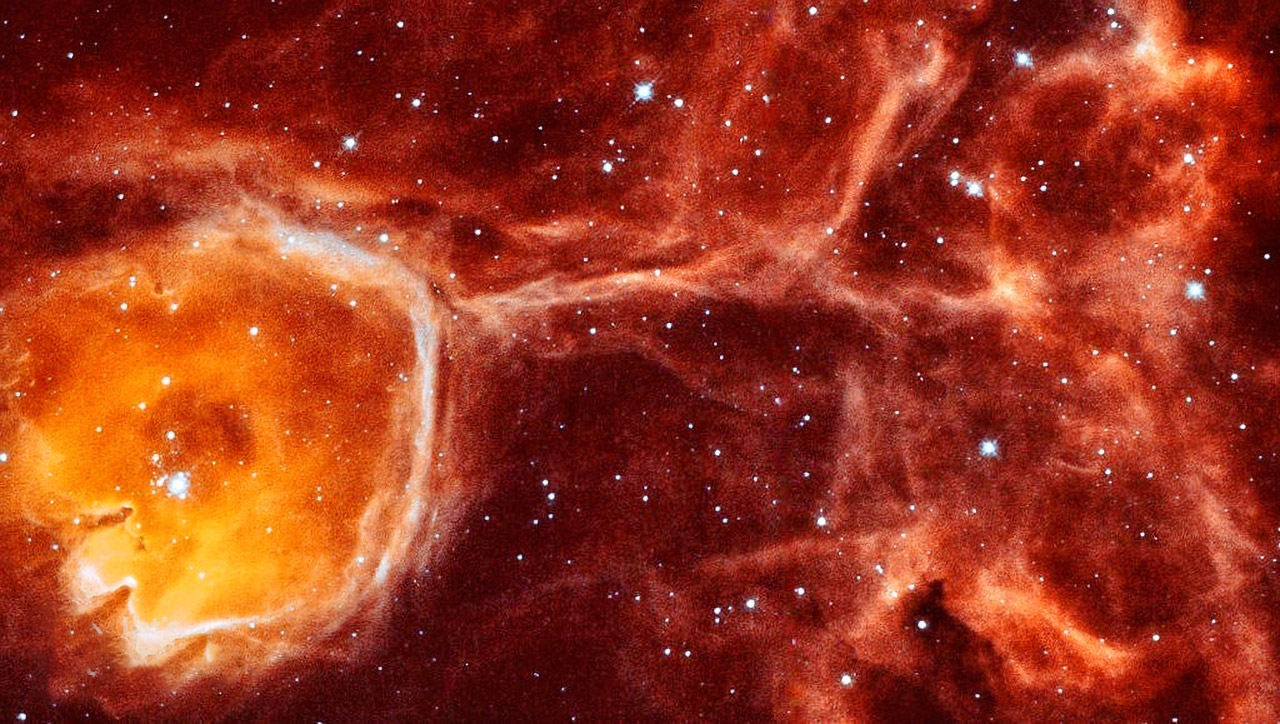
In this image, we can see a sweeping view of gas and dust, interpsersed with stars that fills the field of view. Swing to the left, and there’s a bright orange “bubble” surrounding bright stars. Complex filaments of gas and dust shine in rusty red hues around the gas cavity.
- Superior Optics: 400mm(f/5.7) focal length and 70mm aperture, fully coated optics glass lens with high transmission coatings creates stunning images...
- Magnification: Come with two replaceable eyepieces and one 3x Barlow lens.3x Barlow lens trebles the magnifying power of each eyepiece. 5x24 finder...
- Wireless Remote: This refractor telescope includes one smart phone adapter and one Wireless camera remote to explore the nature of the world easily...
The hurricane of particles moves much faster at about 4 million miles per hour (7 million km/hr), as opposed to about 0.9 million miles per hour (1.5 million km/hr) for our Sun,” said the NASA Hubble Mission Team.

